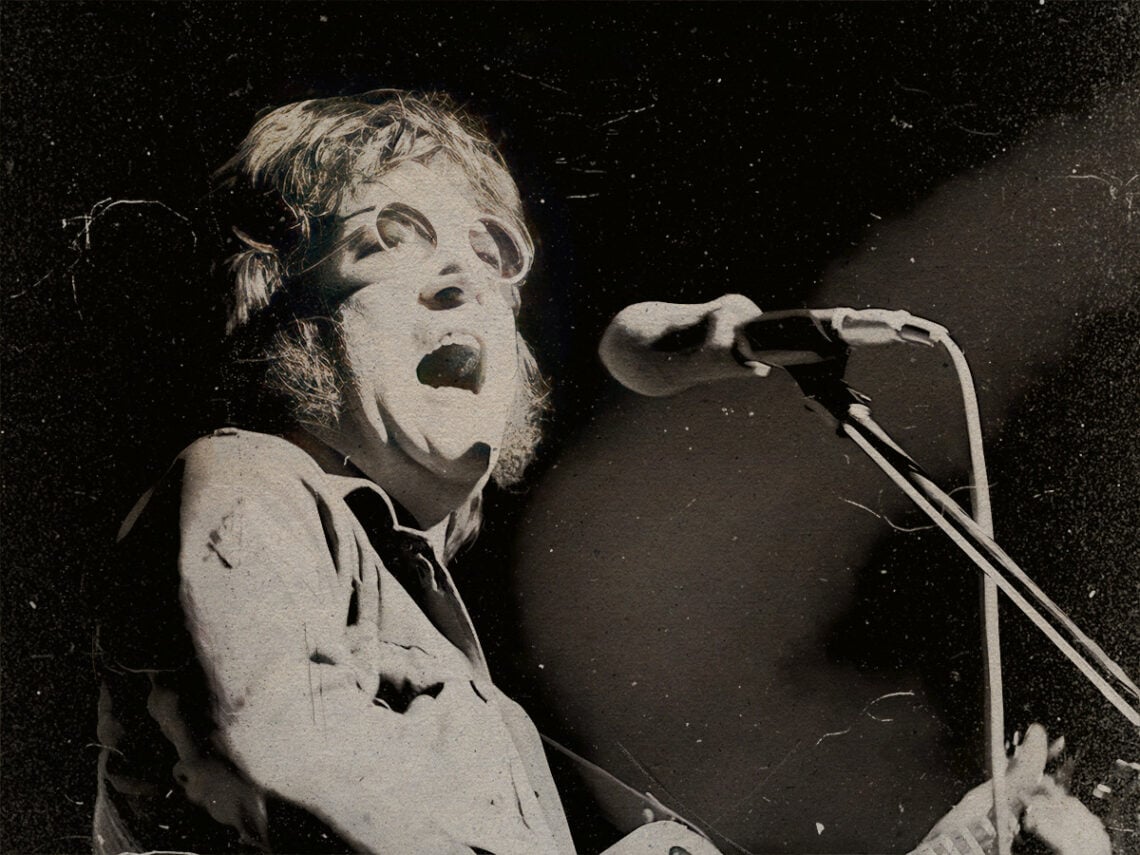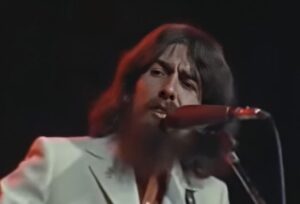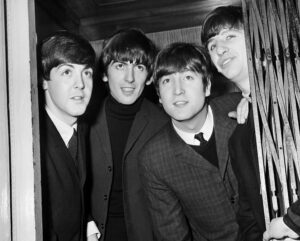It’s borderline impossible to call anything John Lennon did “underrated”. As part of one of the most legendary rock bands of all time, Lennon’s work with The Beatles has been explained nearly to death, to the point where even those unfamiliar with music can at least tell someone a bit about the four likely lads from Liverpool. When Lennon got into his solo career, though, he was a much different man than he was when The Beatles were successful.
Free to make any music he wanted to with his wife, Yoko Ono, many of Lennon’s most celebrated solo songs had to do with his feelings, from the state of the world to the darker sides of his heart. Even though many of his solo songs like ‘Imagine’ and ‘Power to the People’ have been adopted as anthems now, a few songs still tend to fall by the wayside.
Whether because of their lack of promotion or being released on a lesser-selling album, these songs were ignored in their time and designated as filler by the general public. Outside of their label, though, many of those supposed “filler” tracks contain the most intimate sides of Lennon, either returning to his rock roots or playing into his personal feelings in a more obtuse manner.
Regardless of how popular they may have gotten in their time, the back pages of Lennon’s catalogue are far more revealing than his hits, giving some insight into the man who helped bring millions of people together through music. While Lennon’s music may be considered universal, these songs will help people familiarise themselves with the man behind those horn-rimmed glasses.
10 greatest John Lennon deep cuts
10. ‘Slippin’ and Slidin’ – Rock ‘n’ Roll
There hasn’t been one part of John Lennon’s solo years as picked apart as the recording of the Rock ‘n’ Roll album. Recorded during his supposed “lost weekend” in Los Angeles, much of the sessions were marred by a hectic production schedule, featuring Lennon killing the pain of being separated from Yoko with booze and Phil Spector running off with the tapes halfway through. Although Lennon would release the album on his own terms, this version of the classic Little Richard got him back in touch with his roots.
Considering the single from the album was the slow groove of ‘Stand By Me’, this is the kind of Lennon that used to ignite the audience whenever he played at the Cavern Club back in the 1960s, letting out his trademark shriek on the verses. Even though Lennon’s voice is the essential piece of the track, adding the brass section is the highlight of the tune, keeping everything chugging along until a climactic finish towards the end.
While many of his former bandmates would look to their past when crafting their own covers albums, ‘Slippin and Slidin’ feels most in line with where Lennon was at the moment. For an album used to fulfil a legal dispute, Lennon never sounded more uninhibited in his entire solo career.
9. ‘Oh My Love’ – Imagine
Lennon was always the most self-effacing of The Beatles when it came to his own work. In the years since the group’s split, he was known to be especially cutthroat towards any of their celebrated material, going so far as to label his own songs crap. While Lennon prided himself on being the rock and roll spirit behind the group, he could still write heart-wrenching ballads when he wanted to.
Halfway through Imagine, ‘Oh My Love’ is one of the gentlest songs he would ever write, based around the cosmic feeling of finally understanding the meaning of love. Compared to all the other downtempo material he had made, there’s almost a liturgical quality to Lennon’s voice as he gently picks his guitar and sings like he’s calling from the other side of consciousness.
The addition of George Harrison playing lead lines is also a great touch on the back end, almost as if the guitar is nudging the listener awake to ensure they’re hanging on every word Lennon says. After years of trying to find himself after undergoing therapy, this was the first song where Lennon sounded like he had achieved true peace.
8. ‘What You Got’ – Walls and Bridges
By the mid-1970s, Lennon and Ono had started to question where their creative directions were headed. While they had always thrived in each other’s company, the mixed reception of Some Time in New York City led them to wonder if they were actively harming each other’s solo careers by pushing them together. For the first time, the Lennons took a long break away from each other, and judging by ‘What You Got’, John wouldn’t be taking it well.
After coming to grips with the loss of Yoko on Mind Games, Walls and Bridges serves as the harmful repercussions of being detached from one’s soulmate. Although the album would be home to the chart-topper ‘Whatever Gets You Thru the Night’, Lennon is at his wit’s end on this deep cut, begging and pleading with Yoko to take him back.
Set to an early rock and roll shuffle, Lennon turns in a performance which feels like the hardcore equivalent of an early 1960s pop rock song, howling in frustration as the gentle staccato guitars follow his every word. Lennon may have eventually returned to Yoko months after the album was finished, but ‘What You Got’ is a portrait of a man lost without the love of his life.
7. ‘How?’ – Imagine
After Plastic Ono Band, Lennon was slowly starting to find his place in the world again. Since the harsh primal therapy sessions left him cracking his psyche open and re-evaluating the life that led him to where he is today, the former Beatle was taking everything one day at a time, trying to find some way to cope with his internal trauma. While not every day would be easy, Lennon at least found a way to understand his emotions on ‘How?’.
Following none of the conventional structures of a pop tune, the penultimate track on Imagine features Lennon leaving questions unanswered to his audience, wondering if he will ever be able to properly love again if he doesn’t understand the concept of love itself. While Lennon may have seemed emotionally lost during this period, the song’s ending provides an optimistic solution to his problems.
Even though Lennon knows that none of his questions come with clear answers, he does admit that life can be complicated and that it’s his job to put on a brave face and try to find the bright side of everything when he can. He may not have been able to articulate his emotions fully, but after the traumatic experiences he had to relive, ‘How?’ shows Lennon picking up the pieces and carrying on.
6. ‘Luck of The Irish’ – Some Time in New York City
It’s hard to get around any kind of John Lennon album and not touch on his politics. Ever since the release of the song ‘Revolution’, Lennon was always adamant about putting down all of his thoughts about the world at large into songs, pulling from the greats like Bob Dylan and Woody Guthrie before him. Although the first single from Some Time in New York City immediately turned fans off, Lennon was far more gentle on ‘Luck of the Irish’.
As opposed to the wild genre experiments by Yoko and the rock and roll of ‘New York City’, Lennon breaks out the acoustic guitar to sing about the terrors happening in Ireland in the wake of the events of Bloody Sunday. Although the namesake track that precedes it on the album depicts what the day was like, Lennon offers a sad lament for those affected, thinking that all of those caught in the firing line would wish they could change their heritage.
Using a gentle approach to the subject matter, Lennon leaves many of the gory details up to the listener’s imagination, letting the listener fill in the gaps by keeping everything sparse. For as much as Lennon idolised Dylan, this may be one of the few times his songwriting approach matched his folk-rock idol.
5. ‘Dear Yoko’ – Double Fantasy
After years away from the spotlight, Double Fantasy was initially thought of as a breath of fresh air from John Lennon. Spending years away to raise his son, Sean, his muse finally reawakened as he settled down to become a house husband, writing about the virtues of playing with his child and being able to live life on his own terms for the first time. While Lennon’s tragic murder would mar the honeymoon period of the album, ‘Dear Yoko’ was his final reminder of the girl who turned his world inside out.
Since most of the album deals with the ins and outs of his and Yoko as they pertain to their new family, ‘Dear Yoko’ is the kind of sentimental rocker that could have easily been hammered out by Buddy Holly decades earlier. Adding that signature hiccup to his voice, Lennon sounds like he’s smitten all over and again, talking about how he feels lost without his other half and how there’s nothing that he wouldn’t do with her.
While Yoko would dominate the back half of Double Fantasy with her signature sing-song approach to vocals, this would be the final time fans would hear the Lennon they had come to know while he was still alive. It may have been throwing things back to when he was still trying to be a Teddy Boy, but if times had turned out differently, this was a sign of more inspiring things around the corner for Lennon.
4. ‘Isolation’ – Plastic Ono Band
By the time Lennon had undergone therapy, he had to slowly rebuild his emotions step by step. Since he had to unpack all of the pent-up aggressions he had kept at bay since he was a young boy, Lennon poured most of his grief into his music, later being celebrated for his phenomenal songs like ‘Mother’ and ‘God’. While Lennon showed his emotions in terms of anger and frustration, ‘Isolation’ reminded us of the sad child underneath that rough exterior.
Using a constantly shifting chord progression, Lennon takes us through the different thoughts that permeated his mind in the 1970s, being afraid of not ending up with anyone at the end of the day. While he eventually finds his bliss with Yoko, Lennon empathises with those who feel alone in the world, sounding world-weary as he delivers the main chorus line.
Despite leaving most of the conventional wordplay at the door, Lennon delivers one of his best lines towards the end of the song, forgiving those who have wronged him because they are only victims of the insane. He may have been talking about his former bandmates or the various business leaders at Apple starting to make his life a slog, but chances are Lennon would have still delivered it the same way.
3. ‘Grow Old With Me’ – Milk and Honey
When Lennon was fatally shot outside his apartment building in 1980, many fans figured that we would never hear from him again. Even though he seemed to be entering a new era in his creative journey, Lennon was taken in an instant, casting a dark shroud over a new decade before it got started. Yoko did have plans for her husband’s unreleased songs, though, and Milk and Honey gave us one final ballad from the musical mastermind.
Although most of the album was made up of table scraps of songs that Lennon had worked on over the Double Fantasy sessions, ‘Grow Old With Me’ is one of his most stunning ballads, having the same emotional vulnerability of his last album with a Beatles-esque melody behind it. Even in its fragile state, it’s easy to hear the song quickly becoming one of the greatest tunes he’s ever written, as he sings a simple melody about having any kind of higher power watch over his love.
The song resonated with his former bandmates as well, being one of the few tapes the band had worked on during the sessions for The Beatles Anthology before ultimately scrapping it. In addition to the raw demo, the string section done by longtime Beatles producer George Martin for the remix puts the song just below ‘Yesterday’ as one of the best songs released by a Beatle.
2. ‘Nobody Loves You When You’re Down and Out’ – Walls and Bridges
Considering how much emotional weight was on his shoulders, Walls and Bridges could be the most emotionally frail album Lennon ever recorded. Free from Yoko and any lingering inhibitions, Lennon was optimistic and cautious at the same time, spending most of his lost weekend trying to forget the hangups of being a rock and roll star. While songs like ‘#9 Dream’ reminded fans of the Lennon of old, ‘Nobody Loves You When You’re Down and Out’ showed Lennon what he was: scared.
For all of the different sonic avenues that he took his fans down throughout the record, this is the moment Lennon realises that he’s still hung up on Yoko. With a massive brass section backing him, the song has all the hallmarks of a pre-rock and roll ballad, especially since Lennon had been questioning whether to give the song to Frank Sinatra to sing before keeping it for himself.
Listening to the final version, it’s easy to see Lennon doing ‘Ol’ Blue Eyes’ proud, picturing him singing the song in a smoky club as he sits around and cries amongst the patrons once his lover leaves him hanging. After months of drinking his troubles away and finding ways to cope with his pain, the end of Walls and Bridges is where that lost weekend finally catches up with him.
1. ‘Love’ – Plastic Ono Band
There has never been a theme more explored by The Beatles than love. Ever since they recorded their first songs with George Martin, the band knew that some of the best material came from writing love songs, as Lennon sang about the paranoia of opening up to another person. Although Lennon proudly declared that love was all you needed in 1967, he had a different perspective once he entered a new decade.
Taking inspiration from the poetic work that Yoko had written, ‘Love’ is about the cosmic power that infatuation has on someone. Rather than talk about the superficial side of love, Lennon feels like the emotion has left him cosmically free, thinking that his mind has finally been opened to the possibilities of humanity.
Outside of the lyrics, ‘Love’ is one of the best examples of Lennon’s melodic sensibilities, moving through different keys effortlessly while still keeping the key melody gliding throughout the track. Lennon may have cried out in pain many times throughout the making of Plastic Ono Band, but maybe he needed to get all those pent-up feelings out to make something this beautiful finally.



